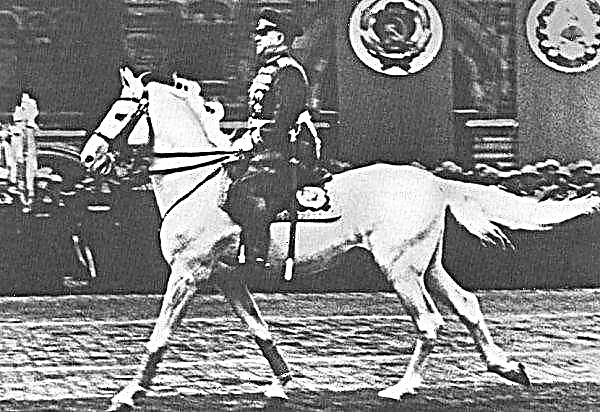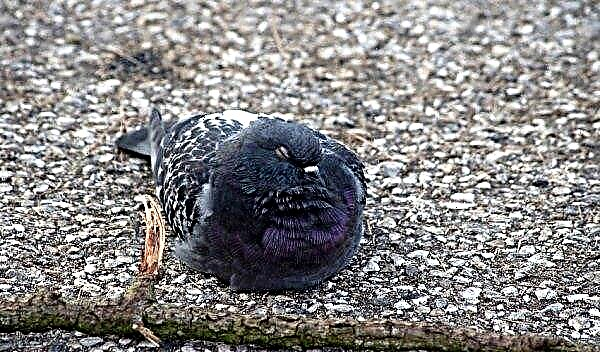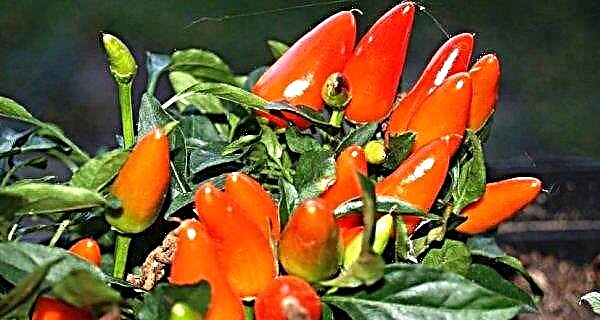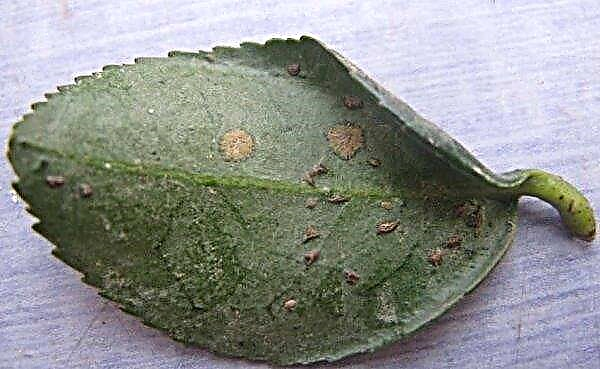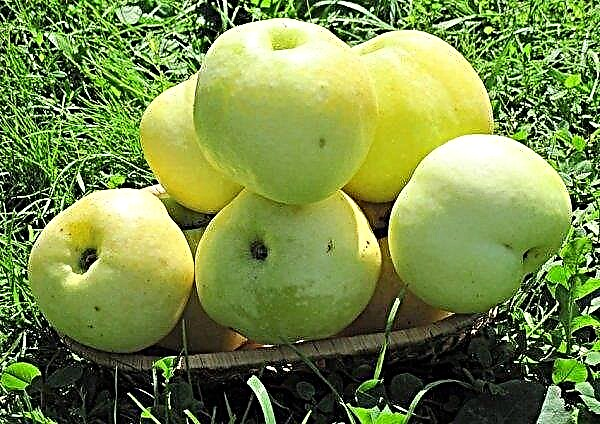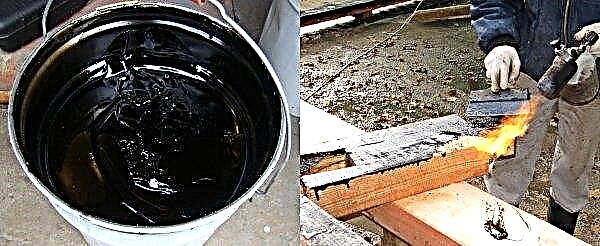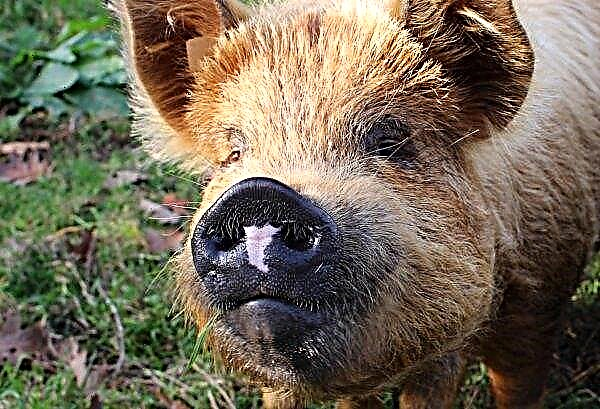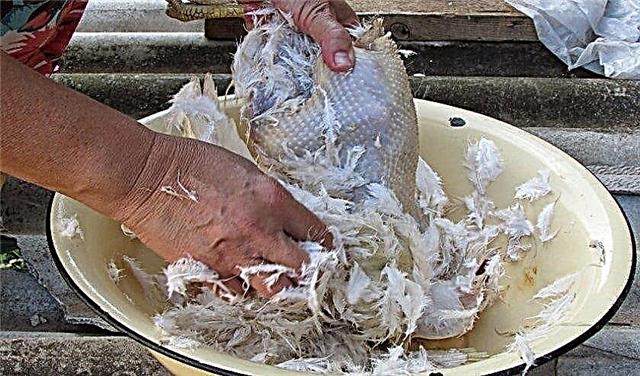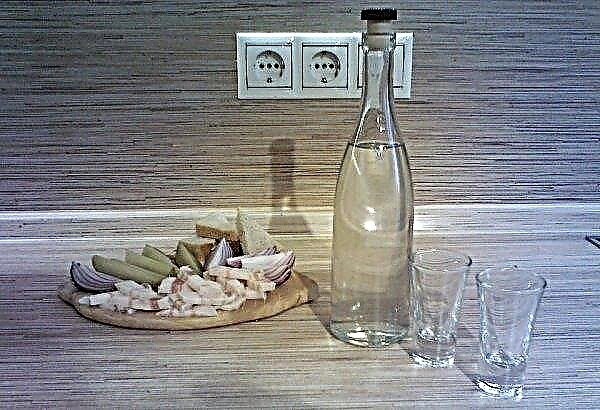The pond in the garden can not only become a decoration, but also make a profit if it is used for breeding fish or crayfish. To create a reservoir, you should first familiarize yourself with some of the nuances of this business, as well as study the information on the rules for its maintenance. This is what will be discussed below.
Types of fish and swimming ponds
Before starting the construction of a reservoir in your area, you should familiarize yourself with the types of such structures. They are distinguished by the complexity of the arrangement:
- One-volume.
- Two-volume.

Each of the types combines several different variations. One-volume can be represented by reservoirs:
- without clear zoning and technical devices;
- with a surface current;
- with the presence of a flow zone of recovery.
Did you know? One of the wonders of natural landscape design is the pink Lake Hiller, located in Western Australia. The most unusual thing in this reservoir is that the liquid from it has a coloring ability - if you draw water into a white container, then there will be a thin pinkish coating on the walls.
The first variety fits well into the landscape of a large site. To purify water in such a pond, biological organisms (plants, zooplankton, etc.) are performed. Most of this design will be occupied by departments with natural filters. The basin of the reservoir is not divided into zones and does not involve the use of complex technological devices. Its advantage is maximum naturalness. 
The surface current pond also represents a single section, not divided into zones by partitions. In this model, a skimmer is used to filter water, and a pump is used to pump it. The design is convenient in that the swimming area will be significantly larger than in the first embodiment, where microorganisms act as a filter.
Ponds with a flowing restoration zone are characterized by the most extensive bathing area than in the reservoirs already described. For filtering, a multi-level system is used here, suggesting the presence of sites with plants and microorganisms and a skimmer. The pool is divided into zones by partitions that do not rise above the water column.
The two-volume design implies a clear separation of the bathing area and the territory with filters. Its device uses automated systems for pumping and purifying water. There are also temperature control devices and biofilters. Such a pond will be the most comfortable for an active pastime, but at the same time requires significant financial costs.
Also, ponds are distinguished by the type of water supply:
- key - It is filled from a natural key located one level above a dug pit;
- brook - assumes the presence of a stream in the section, which is blocked by a dam, which allows you to create a warm reservoir;
- digging - It is created on a site where there are no natural sources, and filling with liquid occurs due to groundwater.
Layout and sketch of the future pond
Before starting work, you should display your idea on paper. The diagram should show the following:
- view of the pond from above and in section;
- design parameters - usually the area of such a pond starts from 20 m², and the depth - from 2 m;
- bottom landscape;
- the location of pipes or sources of water;
- filter localization;
- beach area;
- decorative elements.

Most simply, this task should be solved with the help of a specialist in the field of planning. This will be especially true for those who do not have experience in such matters, since paying for the services of a designer will come out much cheaper than correcting mistakes.
Important! When planning an artificial reservoir scheme, it is very important to know where the sewer and gas systems are located. All this should be reflected in the sketch.
Choosing a place for the pond
When creating a pond with your own hands, you should choose a place where it will be located. Orientation in this matter should be on what inhabitants will live in the reservoir. Lowlands or flooded places are best suited for such purposes. When breeding crayfish, at least 50% of the pond should be in the shade.  The main condition is good diffused lighting. But one part of the pond must be shaded, because the fish in the heat is looking for cooler places. Otherwise, the risk of death of animals increases.
The main condition is good diffused lighting. But one part of the pond must be shaded, because the fish in the heat is looking for cooler places. Otherwise, the risk of death of animals increases.
When choosing a place, you should also take into account the need to install certain equipment, so you need to place the pond as close to electrical sources as possible. It is also worth considering the topography of the site. Irregularities can be used to create a multi-level reservoir, and even areas will make a pond of any shape. In addition, the type of soil is important. If these are sandstones and sandstones, you will have to additionally consider strengthening the coasts.
Groundwater is a factor that directly affects the location and arrangement of the landscape design element in question. If they are at a depth of 1 m, then the task is greatly simplified. You can make a natural lake, which will be very cheap to care for. In areas with a groundwater level of 2-3 m, more attention will have to be paid to strengthening sheer walls and coastlines.Important! When choosing a place for a pond, keep in mind that localization in open sunlight will cause water to bloom in summer. If you place a pond under large trees, falling leaves can cause a pump breakdown.

For areas where underground currents pass at a depth of 5 m, it will be advantageous to place a pond with a depth of 3 m. In this case, you do not have to worry about additional strengthening of the walls and banks, unless, of course, there is sandy soil on the site.
Necessary tools and materials
When the site is selected and on paper there is a detailed diagram, you can proceed to the procurement of materials and preparation of the necessary tools. But before that, you should decide how exactly the idea will be realized. It is clear that in order to create a reservoir, you will have to dig a pit in any case. To do this, you need a shovel. In the future, it all depends on which path the author of the project chooses.
There are 4 options for translating ideas into reality:
- Fill the prepared pit with water. The option is very simple, but you will have to constantly add fluid, as it will evaporate in the heat and soak up the bottom. If this tactic is chosen, then, in principle, no more materials and tools will be required, except for a shovel and a hose.
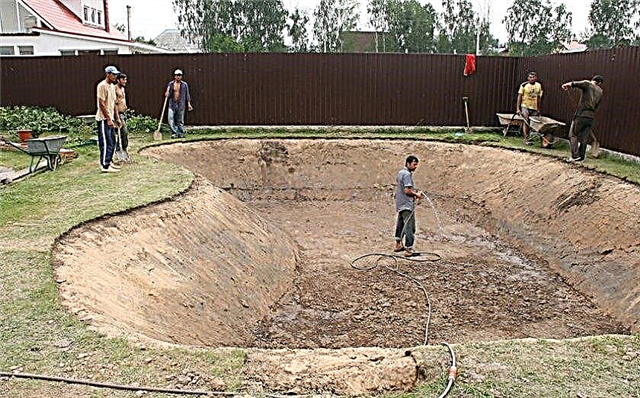
- Cover the bottom of the recess with a special film. So moisture will not be absorbed. The material itself will require replacement every 5–7 years, but this will not be a problem, since in any case it will be necessary to periodically clean it from mud and debris. In this case, you will need to purchase the necessary amount of film and materials for fixing it, as well as a hose and a shovel.
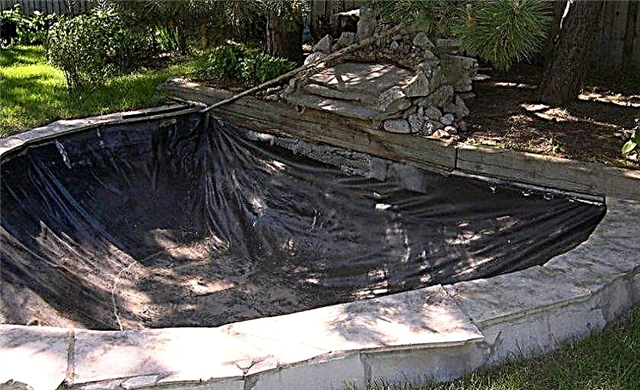
- Install a special plastic container in the pit. Today on the market there are quite a lot of them, of various shapes and sizes. To implement this idea, you will need a hose, a shovel and the container itself.
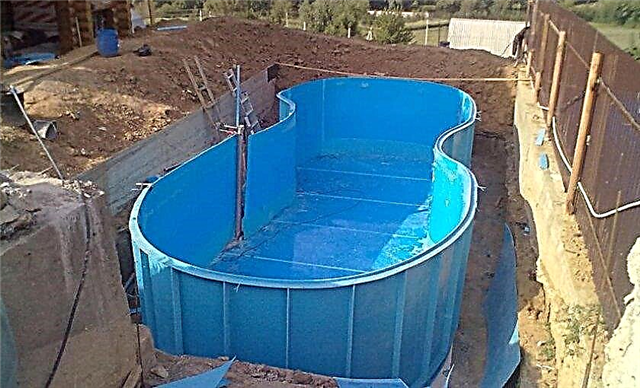
- After digging the foundation pit, make the lining of the walls and bottom a brick. This option is the most difficult to perform. For its implementation, you will need a hose, a shovel, stone or tile, mesh, plaster, sandpaper, glue, fasteners. Usually, you cannot do this kind of work yourself, so you have to turn to specialists for help. Their services, combined with material prices, are quite expensive.

Pond construction
To create an artificial pond begin with the preparation and layout of the site. First of all, the territory should be cleaned of garbage. Then set the stakes around the perimeter of the proposed deepening and pull strong threads through them, remove 20 cm of soil. The upper fertile soil should not be wasted. It can be used on the farm on your site or sold.
Pit under the pond
Approaching digging a pit follows in all seriousness. The strength and appearance of the structure will depend on the quality of the work performed at the initial stage. Manipulations can be performed not only with a shovel, but also with special equipment, if it is a voluminous structure. You need to start digging from the central part allotted under the pond of the territory.

Having made a hole of the necessary depth, they begin to move to the sides. At the same time, when digging a pit, it is necessary to maintain a reserve of at least 10 cm, for example, if a depth of 2 m is needed, then 2.1 m should be done. This place will be occupied by drainage. The banks are made at a slope of 45 °, so that they do not collapse.
It is worth considering that when constructing a large pit, digging it up will not be limited to work. You will have to make sure that the water from the pool does not drain. Otherwise, there is a high risk of flooding of the entire adjacent territory. For this purpose, additional bottom preparation will be required. To do this, the surface is made smooth with smooth transitions of heights. Stack 3 cm of sand, then 4 cm of gravel and again 3 cm of sand.Video: How to dig a pond
Laying waterproofing material
As a waterproofing, you can use a PVC film. To fix it, it will be necessary to make a ditch measuring 30 × 30 cm, retreating 30–55 cm from the edge of a dug hole.
Step-by-step instructions for laying the film:
- Line prepared pit with material. Approximately 40 cm allowances should be left on each side.
- On the bottom, already covered with a film, distribute 50 cm of sand, then 80 cm - pebbles or gravel.

At the end of the above work, you can begin to fill the pit with water. If the soil on the site includes a large amount of sand, you have to approach waterproofing in a different way. In such cases, it is better to use a rigid form, that is, buy a ready-made plastic container or pour concrete on the bottom, and then make brickwork. The second option is more costly and energy intensive, but will last longer.
Pump installation
At the last stage, pumps for distillation of water are mounted. They are of two types:
- submersible - placed directly at the bottom of the pond;
- centrifugal - located near the reservoir, but below the water column.
 The equipment is connected to the source and filtering device. Thus, the water will be purified and then returned back to the pool.
The equipment is connected to the source and filtering device. Thus, the water will be purified and then returned back to the pool.
Fish breeding rules
Breeding fish in a pond in the country also has its own nuances. The first step is to take care of the presence of oxygen in the water. Otherwise, the reproduction of living creatures will occur very slowly, and the risk of extinction of some representatives will also increase. The function of supplying liquid to air in such reservoirs is performed by vegetation.
Acquire floristic decoration for the pond in specialized stores. Vegetation is selected in accordance with the depth of the pond. For shallow water, grouse, chastuha, and capillary are suitable, and for deep basins - a basilis, Siberian hive, and loosestrife.
Planting is carried out in the spring, at the end of May. They should be placed in separate containers. This approach will allow you to create a zone with a floral design and not take away the space reserved for swimming. The soil mixture for aquatic plants is bought ready-made or clay and peat are mixed independently in a 2: 1 ratio. Previously, the bottom of the tank is lined with burlap. Plants are placed at a depth of not more than 2/3 of the container.
Fish are not launched immediately after the creation of the reservoir. Previously, a silt layer should be formed in it. It will take about a month from the moment of pouring the liquid. After this period, the water will need to be drained completely, and the sludge layer should not be touched. Then fill in a new fluid and plant the vegetation.
When it will be noticeable that the floral elements have taken root, you should check the acidity level. For this, special devices or litmus papers are used. The indicator should be neutral. Otherwise, the fish may not take root in the pond.
The next step will be the selection of feed in accordance with the variety of aquatic inhabitants. When the water warms up to + 24 ° C, you can try to do the first launch of livestock. Initially, regardless of the size of the pond, about 5 fish settle. For several months they have been monitoring their condition, development.Did you know? Artificial ponds became a fashionable element of landscape design during the Renaissance.

Otherwise, fish breeding rules will vary depending on their species. It is preliminary recommended to study all the necessary information on specific representatives of the water kingdom.
Pond Care
The pond site will require some maintenance work. It will not be difficult if the pumps and filtration devices are connected correctly. The only thing that needs to be done is to periodically clean the equipment from contamination.
In extreme heat, water from ponds of this kind will evaporate, so you have to add it manually. So that the fish does not suffer, you need to add no more than 10% of the liquid of the total volume. In the autumn, when leaf fall begins, it is better to pull a net over the pool so that foliage does not fall into it.
A decorative swimming pond, which is also suitable for fish farming, can be built with one's own hand. It must be organized in accordance with all the rules and technologies, taking into account the location of the communications that will need to be connected to ensure the proper functioning of the reservoir.





